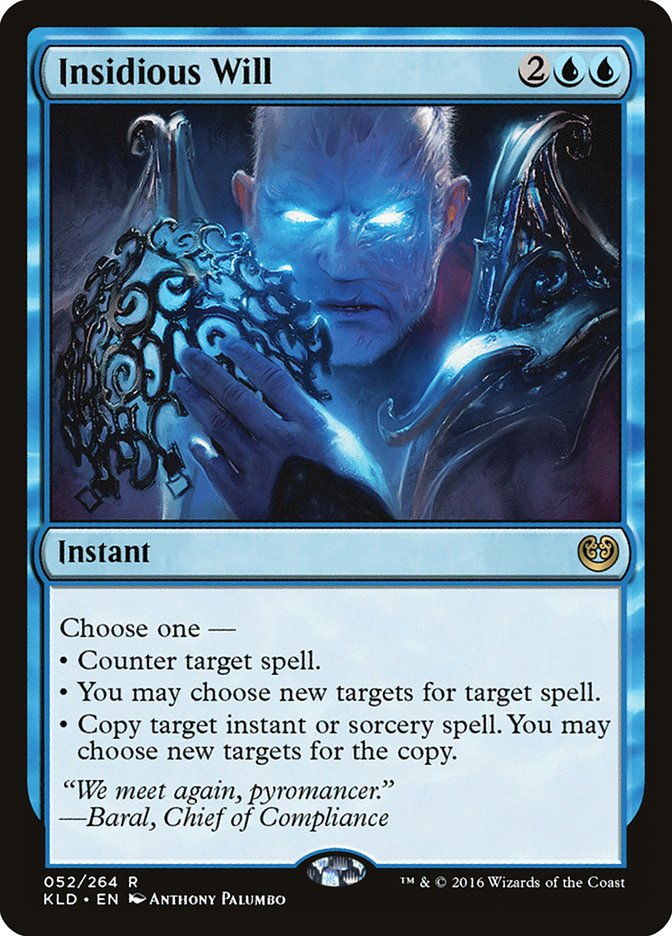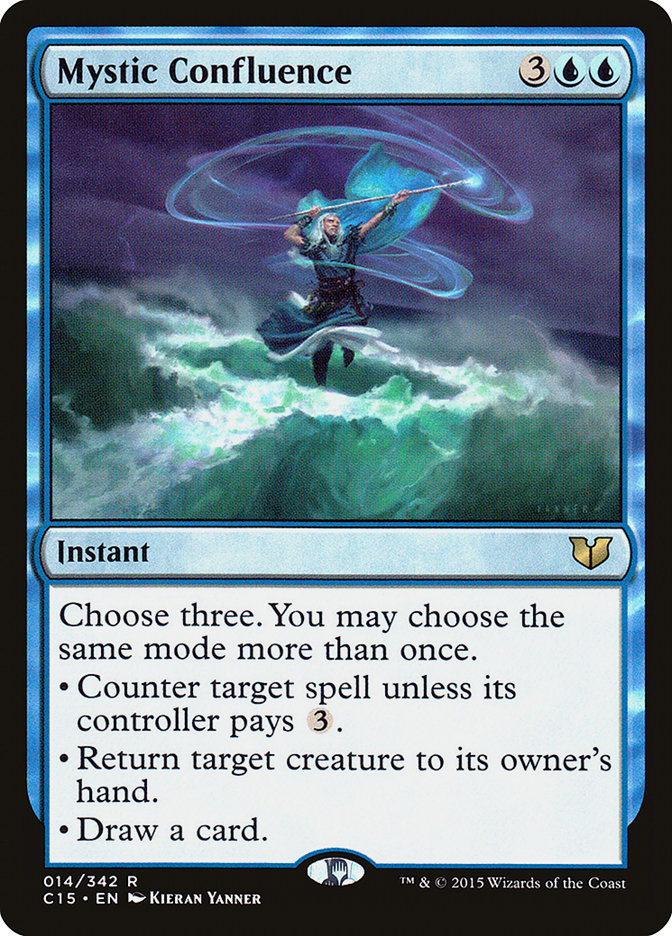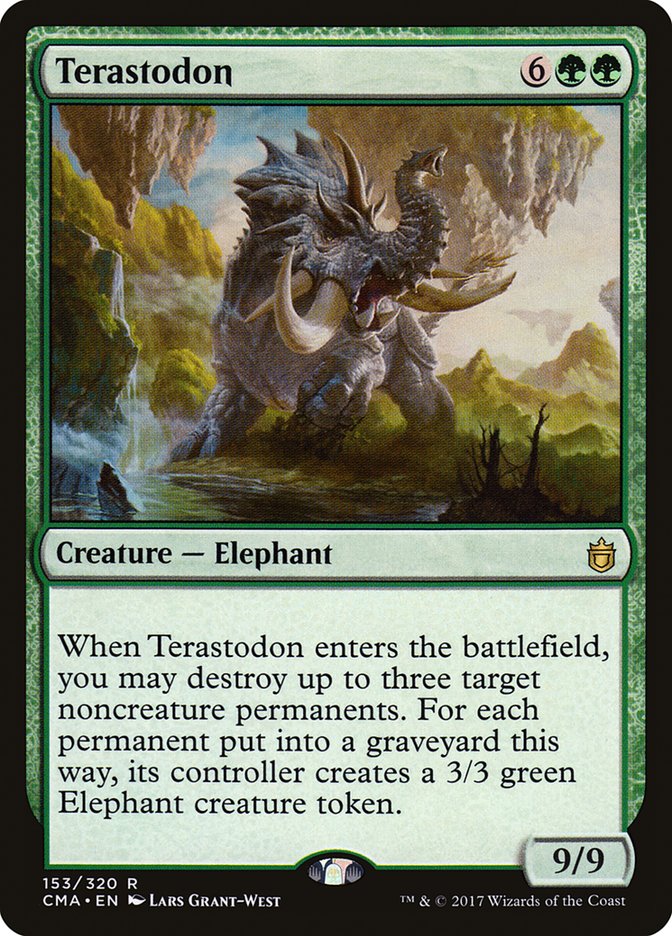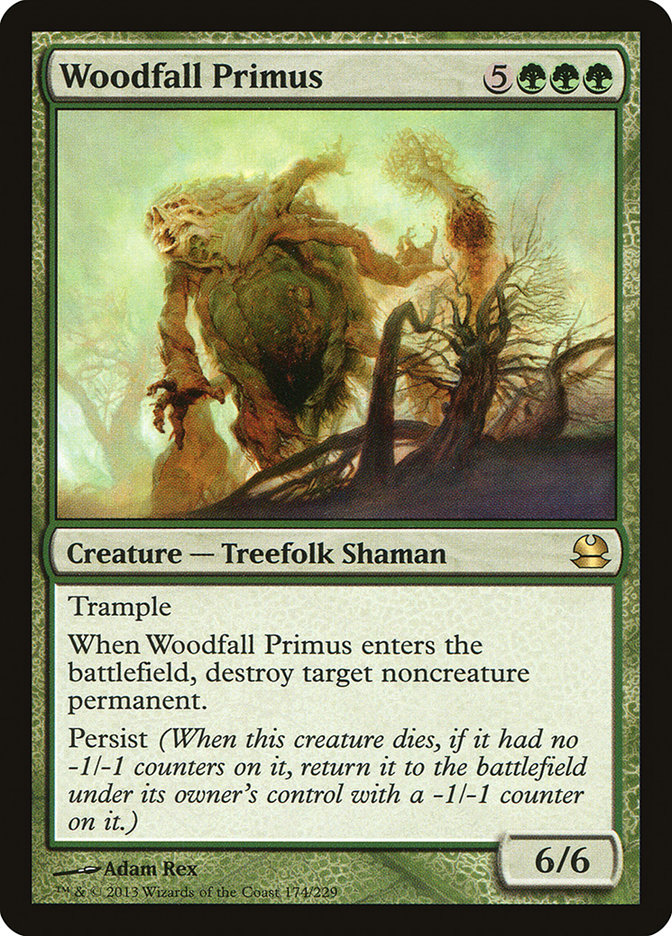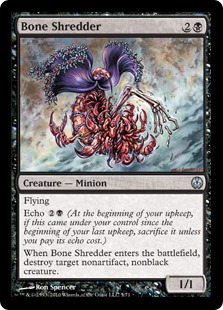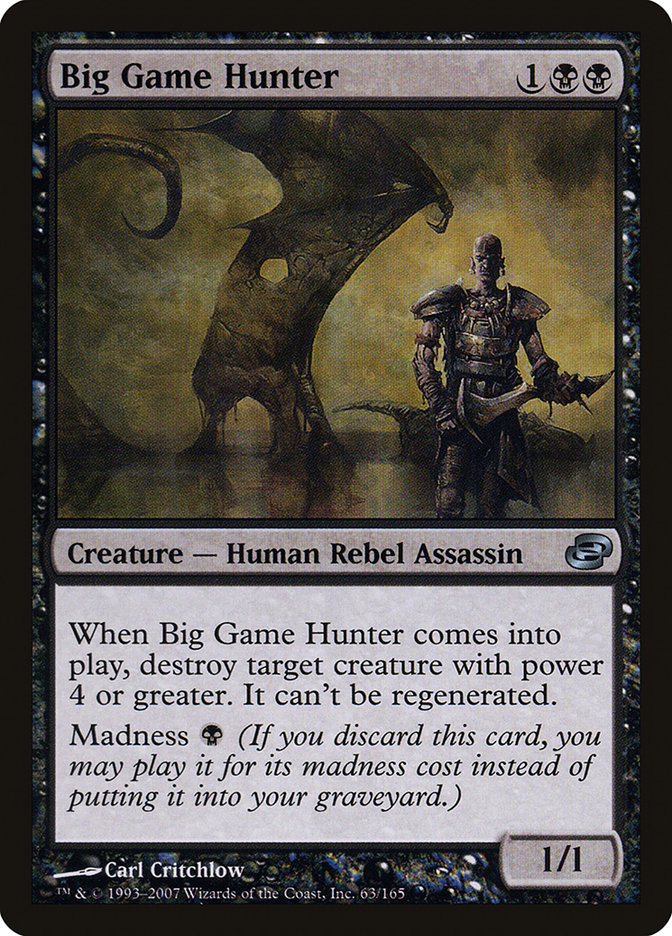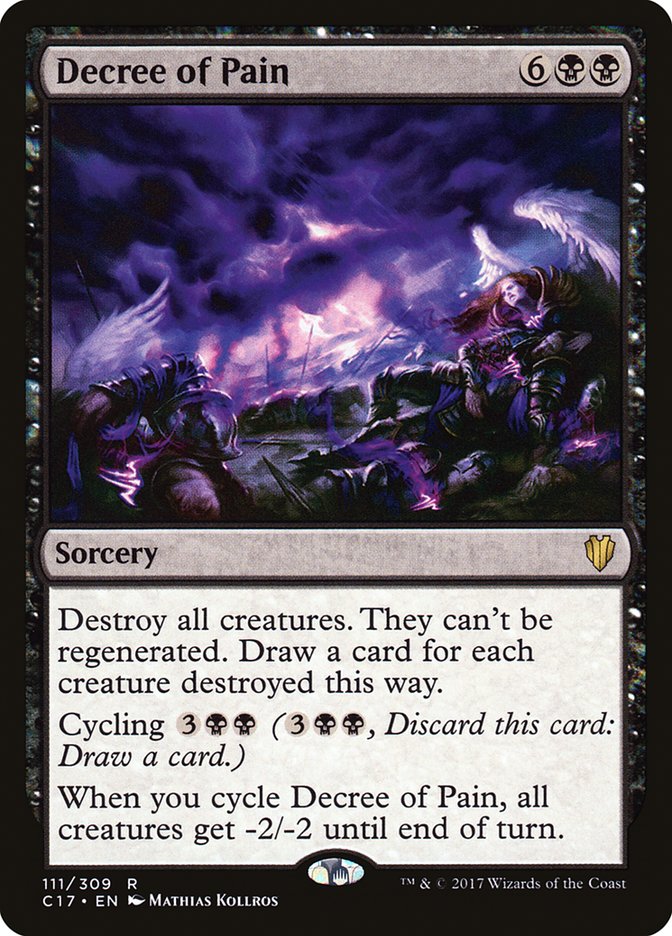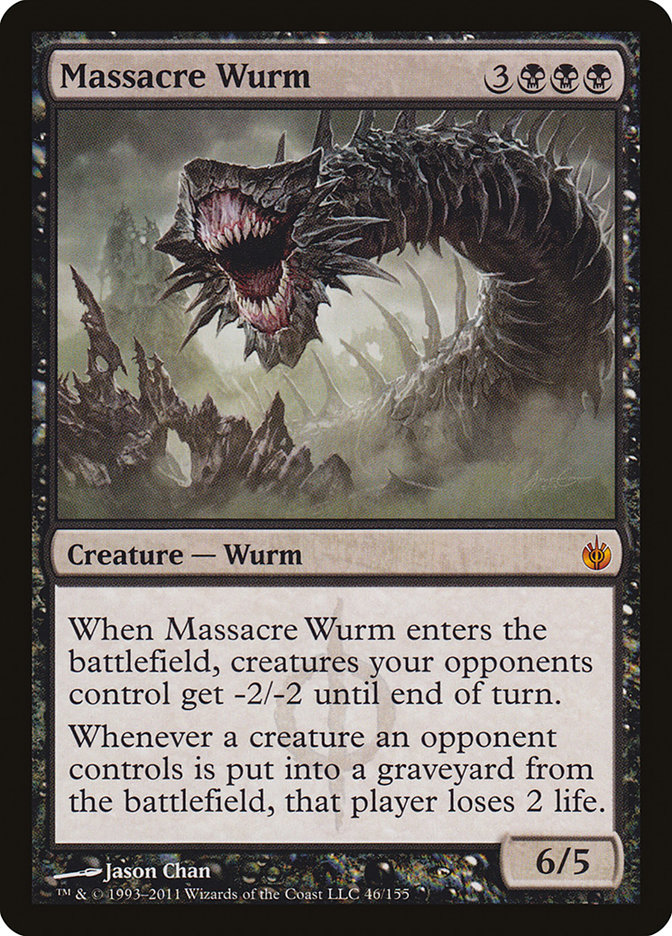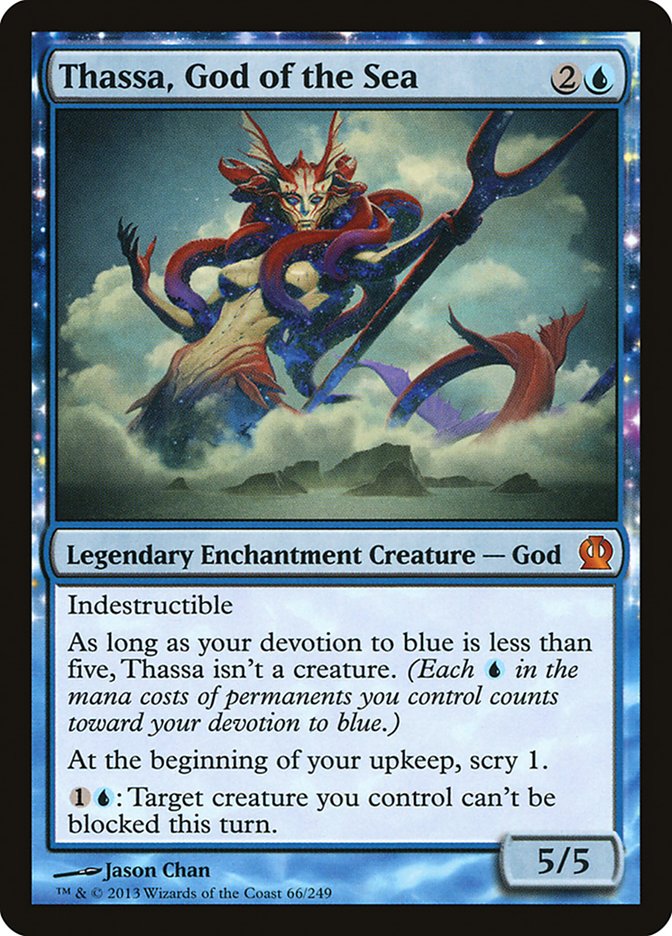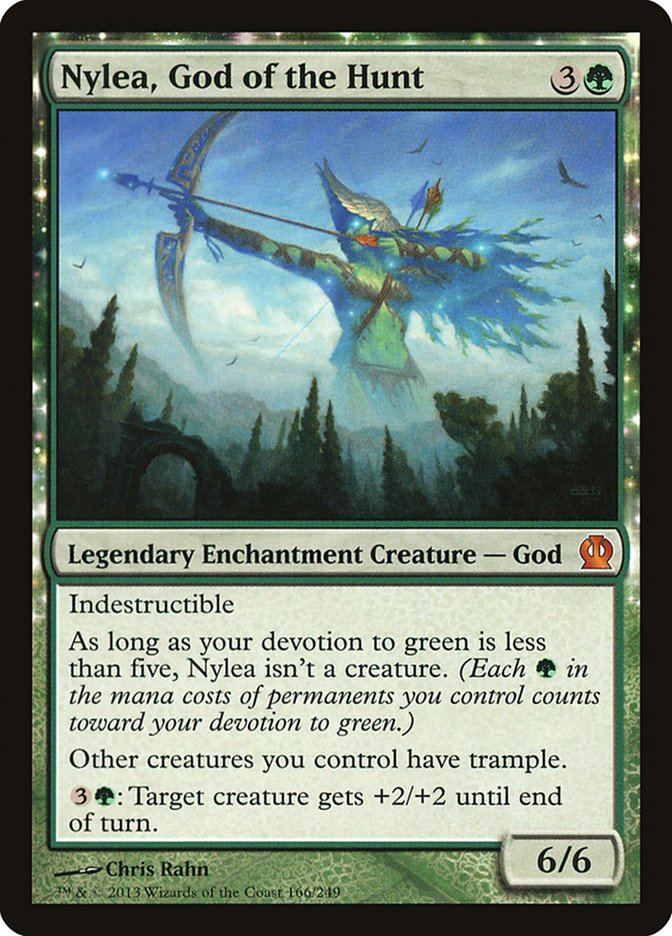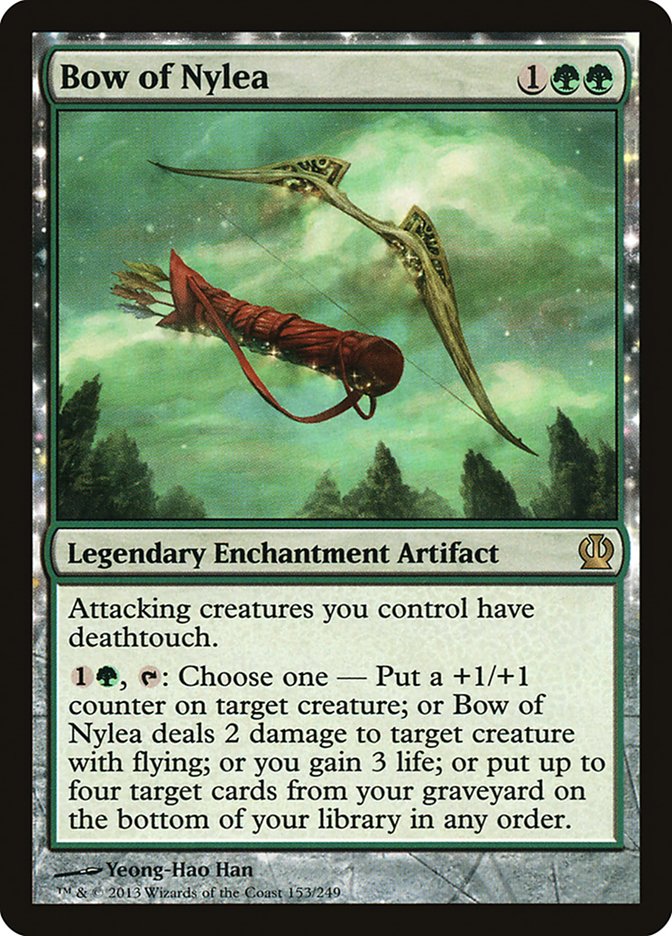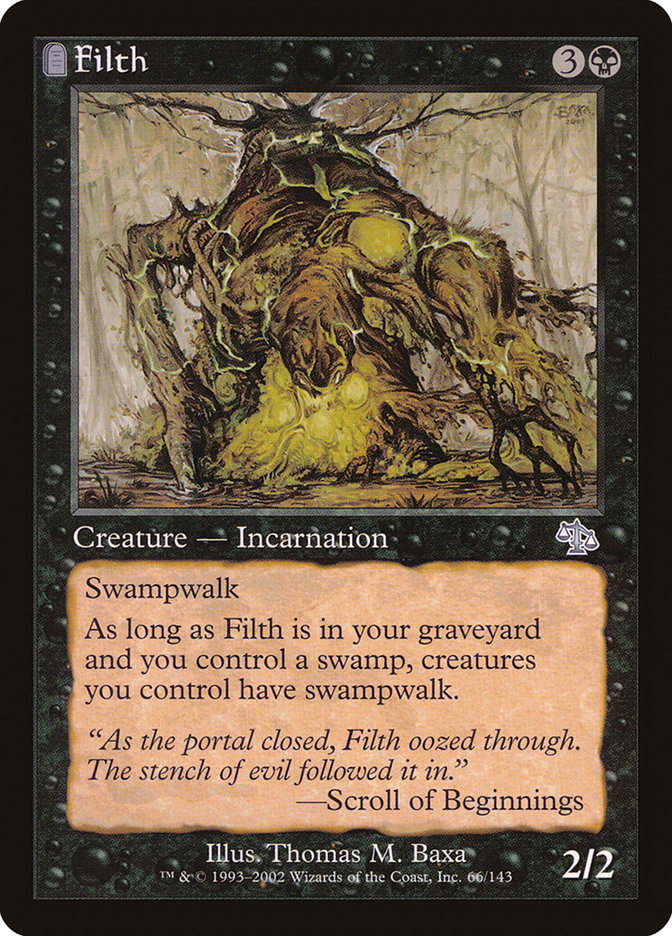Doctoring decks isn’t something I’ve done much of in the 400 or so previous episodes of this column, mostly because other writers over the years were doing it. Sean McKeown was notoriously good at helping folks find the right balance of strong and fun. We don’t do as much of it anymore, so when the opportunity from helpful regular Todd Lowery came along, the time seemed right to roll up my sleeves and give him a shot in the arm. Or whatever appropriate doctor metaphor applies.
Todd told me he wanted to build Vorosh, the Hunter. He sent me a partial list and told me that he wanted a kind of toolbox deck in the end. Here’s what he sent:
Creatures (11)
- 1 Sakura-Tribe Elder
- 1 Solemn Simulacrum
- 1 Genesis
- 1 Eternal Witness
- 1 Yavimaya Elder
- 1 Duplicant
- 1 Trinket Mage
- 1 Coiling Oracle
- 1 Corpse Connoisseur
- 1 Clever Impersonator
- 1 Ramunap Excavator
Lands (10)
Spells (32)
- 1 Sensei's Divining Top
- 1 Brainstorm
- 1 Hinder
- 1 Counterspell
- 1 Vampiric Tutor
- 1 Dissipate
- 1 Force of Will
- 1 Time Warp
- 1 Sol Ring
- 1 Demonic Tutor
- 1 Diabolic Tutor
- 1 Serum Visions
- 1 Darksteel Ingot
- 1 Kodama's Reach
- 1 Entomb
- 1 Zombify
- 1 Sylvan Scrying
- 1 Harrow
- 1 Crop Rotation
- 1 Tormod's Crypt
- 1 Dimir Machinations
- 1 Farseek
- 1 Cancel
- 1 Krosan Grip
- 1 Damnation
- 1 Ponder
- 1 Expedition Map
- 1 Preordain
- 1 Beast Within
- 1 Command Tower
- 1 Cyclonic Rift
- 1 Grip of Phyresis

There’s a base to build off from here. From what he’s sent, I can draw some conclusions about Todd’s local group. The first, and most glaring, is that sometimes players need answers in short order—hence the tutors and counterspells. Second, the density of counterspells tells me that there are some combo players, so we’ll have to keep that in mind as we go forward.
Third, the inclusion of spells like Crop Rotation and Harrow suggests the need to be tighter with our mana—getting the right colors is as or more important than the right amounts. Todd told me that a full suite of fetchlands and original duals wasn’t in the budget, but I’m on a “build a cheaper land base” kick these days anyway. There are plenty of great options at affordable prices—which is to some extent how we’ll approach the whole deck, not just the manabase.
Todd told me that his inclusion of tutors is for the “good” reason—not to just tutor for win conditions, but to look for answers—which means we’ll need to include some more of those answers. Todd has already included the skeleton of the deck, so all we’ll need to do is put the meat on those bones. First up are cards he’s selected which warrant replacement. There aren’t very many.
In fact, there are only four: Cancel, Counterspell, Riftsweeper, and Ramunap Excavator. Let’s get to the last first. Because Todd isn’t going with a suite of fetchlands or a dredge strategy, and he’s told me that mass land destruction isn’t generally something which gets played in his environment, the Excavator doesn’t hold much value. We’ll simply open the slot for something else, since it doesn’t warrant a straight-up replacement. What does warrant a replacement is Riftsweeper, which also doesn’t serve too much function in the deck; into that slot we’ll slide an old stand-by which will fuel some of the things the deck wants to do, Yavimaya Elder.
The counterspells come next.
One of my strong opinions about Commander is that, due to the multiplayer nature of the format, counterspells must also do something else. The one-for-one trade simply isn’t enough. Todd is happy that he could acquire a Force of Will, so we’ll leave it in, although I think Pact of Negation would be my choice in that slot. The king of Commander counterspells is Cryptic Command, but it can get a little pricey to pick up a new copy, so we’ll set that aside for the moment; Mana Drain also goes in that pile. We’ll also discount most anything that has the “unless they pay {X}” clause—even if it’s the most fun blowout when you Daze or Disrupt the person who has tapped out for a huge Genesis Wave. Given the toolbox nature of the deck, I’ll suggest two counterspells which offer even more flexibility: Insidious Will and Mystic Confluence.
Insidious Will offers the opportunity to counter a spell, choose a new target for a spell, or copy it. Situationally, it can be an amazing choice. Having that Time Stretch target yourself is better than countering it. Getting your own copy of the giant Genesis Wave is also fantastic. Of course, you always simply have the option of simply countering the thing which will hurt you.
Mystic Confluence gives you three different modes, and you can choose any of them up to three times. We shied away from the Force Spike variants, but the added value of Mystic Confluence makes it well worth it. In a pinch, you can just draw three cards or bounce three creatures. If someone has tapped out for the huge spell, you can Mana Leak it and still have two other modes to choose from. Good players get lots of mileage from flexible cards, and both of these are great places to start.
We’ll then add one more counterspell to the pile: Glen Elendra Archmage. Once we’ve used it twice, we can just Regrow to it start the process again.
Next up is adding more tools to the box. Todd has suggested a direction with the inclusion of Entomb, Corpse Connoisseur, Genesis, and Zombify—getting creatures into the graveyard and them bringing them back. That’s the direction we’ll head.
We’ll need something to deal with each type of permanent. Beast Within is an excellent start and fits with the flexibility theme we talked about with the counterspells. Here, we’ll go with some creatures to do the heavy lifting for us, continuing on the example set by Duplicant. Reclamation Sage is first. Then we’ll add the two big beasts, Terastodon and Woodfall Primus. We have to be careful about not putting too many high-cost things into the deck, since we want to use Genesis to reuse them—which of course costs mana. Once those two have done their work, however, they can also be beatsticks; they also make nice choices for copying with Clever Impersonator. The deck already has Grip of Phyresis for dealing with Equipment in a clever fashion. Having offered ourselves options for dealing with noncreature permanents, we can turn our eye to creatures.
Bone Shredder is the first card which came to mind here. Because it has echo, it’ll easily hit the graveyard, assuming we don’t have other methods of getting it there (like blocking). Bone Shredder’s cousin Big Game Hunter also makes an appearance for us, since it can take out black creatures as well. The third bit of creature removal is less direct. Puppeteer Clique lets us use a creature from someone else’s graveyard, give it haste, and then exile it at end of turn. Maybe it’s so good we’d like to use it again, in which case we find a way to get it back into the graveyard; otherwise, it’s done its job in getting rid of the creature for good.
Those three should suffice for targeted removal, so let’s move onto a few things with a little more punch. Hostage Taker seems like a nice card which once again offers some flexibility in its choices.
Todd started the list with Damnation and Cyclonic Rift; to that we’ll add Decree of Pain for some card draw, basically topping out our seven-plus-mana spells. We might have room for one or two more. Because of Decree of Pain, which we can cycle to give everything -2/-2, we’ll add one of my favorite instants of all time, Sudden Spoiling, which can double as an emergency Fog. Of course, if we’re playing Sudden Spoiling, we have to play Massacre Wurm—which is also a fine choice for Clever Impersonator.
Although we have a few tutors and some things to sift through the deck, we’ll need a little more card draw as well. Greater Good will help us get those things we want into the graveyard in addition to drawing cards. Regular readers know that I love sacrifice outlets, and Greater Good might be the best of them.
Some creature-based card draw will treat us well. Masked Admirers leverages our repeat casting of things. Havengul Lich (which Darksteel Ingot might provide us with the right color mana to make use of) is a techy choice which is effectively card draw, since it treats graveyards (to include our own) like an extension of our hand. Speaking of which, let’s do the same with Memory Plunder.
Putting cards from the graveyard back into our hand, like we’ll do with Genesis, also counts for me as card draw, so we’ll add Oversold Cemetery (you can consider Palace Siege if you don’t like Oversold Cemetery’s condition; to me, the latter is worthwhile because of the casting cost, and I suspect the condition will frequently be met). We’ll add one more huge bit of card draw in Damia, Sage of Stone. It’s something we can Entomb and Zombify early on if we want, or simply wait to cast later in the game, when our hand is getting empty.
Now that we have all the tools we want, we’ll add the final touches: how our commander can kill people. Grip of Phyresis to steal Equipment is saucy. Let’s add one or two things of our own.
Thassa, God of the Sea provides us with some library manipulation as well as the ability to make Vorosh unblockable; we can add Rogue’s Passage to do the same. Sword of Feast and Famine gets us through quite a few creature blockades as well as untapping lands so that we can respond to other threats. Since we’d like to be able to kill with Vorosh in two swings instead of three, we’ll add Forgotten Ancient—which can get large on its own or move the counters over. The latter ability is great for making Vorosh lethal, and it’s even better for getting rid of the -1/-1 counters from our persist creatures (Glen Elendra Archmage, Puppeteer Clique, and Woodfall Primus). Unfortunately, Forgotten Ancient doesn’t target; if it did, it would make a ridiculous combo with Willbreaker.
To our kill suite, we’ll add Nylea, God of the Hunt and her weapon, Bow of Nylea. Together, they give all our attacking creatures trample and deathtouch, meaning if there’s a blocker of any size, we only have to assign one damage to it in order to trample over the rest. The Bow can add counters to Vorosh as well as doing a number of other things, like saving some of our important cards from graveyard removal (or just getting them back in to reuse).
Our final bit of killing comes through Filth. Once it’s in the graveyard, which was can somewhat easily do, some portion of our opponents won’t be able to block. Once Urborg, Tomb of Yawgmoth is online, none of them will.
That just leaves finishing up the land base. In addition to what’s listed already, we add Sunken Hollow, Hinterland Harbor, Tainted Isle, and Tainted Wood as reasonably affordable lands which produce multiple colors. We’ll then put in Reflecting Pool and Forbidden Orchard to help Command Tower produce all our colors of mana. The creatures we give to other players with Forbidden Orchard are grist in the Massacre Wurm mill. Since they don’t fly, they can’t block Vorosh, which is our primary source of damage.
The land count ends up at 37, which is effectively 36 since one of them is Maze of Ith. Sure, the Maze can produce mana if Urborg, Tomb of Yawgmoth is on the battlefield, but that’s not something we can count on. Even though I normally start with 37, I’m comfortable with 36 lands in this deck because it doesn’t have that much of a high end mana-wise. The ramp should take care of getting to the big hitters, like Woodfall Primus and Terastodon.
Here’s the final list:
Creatures (25)
- 1 Sakura-Tribe Elder
- 1 Solemn Simulacrum
- 1 Genesis
- 1 Forgotten Ancient
- 1 Eternal Witness
- 1 Bone Shredder
- 1 Duplicant
- 1 Trinket Mage
- 1 Filth
- 1 Coiling Oracle
- 1 Big Game Hunter
- 1 Riftsweeper
- 1 Masked Admirers
- 1 Puppeteer Clique
- 1 Woodfall Primus
- 1 Glen Elendra Archmage
- 1 Corpse Connoisseur
- 1 Terastodon
- 1 Massacre Wurm
- 1 Damia, Sage of Stone
- 1 Havengul Lich
- 1 Nylea, God of the Hunt
- 1 Thassa, God of the Sea
- 1 Reclamation Sage
- 1 Clever Impersonator
Lands (36)
- 1 Forbidden Orchard
- 1 Strip Mine
- 7 Forest
- 1 Reflecting Pool
- 1 Volrath's Stronghold
- 6 Swamp
- 6 Island
- 1 Tainted Wood
- 1 Tainted Isle
- 1 Temple of the False God
- 1 Maze of Ith
- 1 Yavimaya Coast
- 1 Overgrown Tomb
- 1 Breeding Pool
- 1 Urborg, Tomb of Yawgmoth
- 1 Reliquary Tower
- 1 Hinterland Harbor
- 1 Rogue's Passage
- 1 Opulent Palace
- 1 Sunken Hollow
Spells (39)
- 1 Sensei's Divining Top
- 1 Brainstorm
- 1 Hinder
- 1 Vampiric Tutor
- 1 Dissipate
- 1 Force of Will
- 1 Time Warp
- 1 Sol Ring
- 1 Demonic Tutor
- 1 Diabolic Tutor
- 1 Serum Visions
- 1 Darksteel Ingot
- 1 Kodama's Reach
- 1 Entomb
- 1 Zombify
- 1 Oversold Cemetery
- 1 Decree of Pain
- 1 Sylvan Scrying
- 1 Harrow
- 1 Crop Rotation
- 1 Greater Good
- 1 Tormod's Crypt
- 1 Dimir Machinations
- 1 Farseek
- 1 Krosan Grip
- 1 Sudden Spoiling
- 1 Damnation
- 1 Ponder
- 1 Memory Plunder
- 1 Expedition Map
- 1 Preordain
- 1 Sword of Feast and Famine
- 1 Beast Within
- 1 Command Tower
- 1 Cyclonic Rift
- 1 Bow of Nylea
- 1 Mystic Confluence
- 1 Insidious Will
- 1 Grip of Phyresis

Playing the deck means picking spots. The early turns will be spent with either some ramp or some card draw. Dealing with threats and producing a few of our own will take up the middle turns, where we’ll develop the opportunity to reuse those threats. Then we’ll see where we are in the end-game and adjust accordingly. The deck fits both Todd’s request and my recent style of making decks which I really have to squeeze some mileage out of evaluating and adapting to the board state. I hope that I’ve inspired Todd with the ideas and it leads him to somewhere fun for his final build.
This week’s Deck Without Comment is Animar’s Swarm.
Creatures (45)
- 1 Solemn Simulacrum
- 1 Sun Quan, Lord of Wu
- 1 Man-o'-War
- 1 Wood Elves
- 1 Eternal Witness
- 1 Mystic Snake
- 1 Duplicant
- 1 Nantuko Vigilante
- 1 Flametongue Kavu
- 1 Primordial Sage
- 1 Venser, Shaper Savant
- 1 Nevermaker
- 1 Slithermuse
- 1 Spearbreaker Behemoth
- 1 Acidic Slime
- 1 Oracle of Mul Daya
- 1 Artisan of Kozilek
- 1 Ulamog, the Infinite Gyre
- 1 Garruk's Packleader
- 1 Phyrexian Metamorph
- 1 Garruk's Horde
- 1 Rage Thrower
- 1 Deadeye Navigator
- 1 Maelstrom Wanderer
- 1 Yeva, Nature's Herald
- 1 Roaring Primadox
- 1 Thragtusk
- 1 Rubblehulk
- 1 Progenitor Mimic
- 1 Species Gorger
- 1 Archetype of Aggression
- 1 Realm Seekers
- 1 Jalira, Master Polymorphist
- 1 Mercurial Pretender
- 1 Surrak Dragonclaw
- 1 Flamerush Rider
- 1 Shaman of the Great Hunt
- 1 Stampeding Elk Herd
- 1 World Breaker
- 1 Altered Ego
- 1 Ulvenwald Hydra
- 1 Emrakul, the Promised End
- 1 Elder Deep-Fiend
- 1 Vizier of the Menagerie
- 1 Rhonas the Indomitable
Planeswalkers (3)
Lands (38)
Spells (13)

Check out our comprehensive Deck List Database for lists of all my decks:
SIGNATURE DECKS
Purple Hippos and Maro Sorcerers; Kresh Into the Red Zone; Halloween with Karador; Dreaming of Intet; You Did This to Yourself.
THE CHROMATIC PROJECT
Mono-Color
Heliod, God of Enchantments; Thassa, God of Merfolk; Erebos and the Halls Of The Dead; Forge of Purphoros; Nylea of the Woodland Realm; Karn Evil No. 9.
Guilds
Lavinia Blinks; Obzedat, Ghost Killer; Aurelia Goes to War; Trostani and Her Angels; Lazav, Shapeshifting Mastermind; Zegana and a Dice Bag; Rakdos Reimagined; Glissa, Glissa; Ruric Thar and His Beastly Fight Club; Gisa and Geralf Together Forever.
Shards and Wedges
Adun’s Toolbox; Angry, Angry Dinos; Animar’s Swarm; Ikra and Kydele; Karrthus, Who Rains Fire From The Sky; Demons of Kaalia; Merieke’s Esper Dragons; Nath of the Value Leaf; Rith’s Tokens; The Mill-Meoplasm; The Altar of Thraximundar; The Threat of Yasova; Zombies of Tresserhorn.
Four-Color
Yidris: Money for Nothing, Cards for Free; Saskia Unyielding; Breya Reshaped.
Five-Color
Partners
Tana and Kydele; Kynaios and Tiro; Ikra and Kydele.
THE DO-OVER PROJECT
Animar Do-Over; Glissa Do-Over; Karador Do-Over; Karador Version 3; Karrthus Do-Over; Kresh Do-Over; Steam-Powered Merieke Do-Over; Lord of Tresserhorn Do-Over; Mimeoplasm Do-Over; Phelddagrif Do-Over; Rith Do-Over; Ruhan Do-Over.
If you’d like to follow the adventures of my Monday Night RPG group (in a campaign that’s been alive since 1987) which is just beginning the saga The Lost Cities of Nevinor, ask for an invitation to the Facebook group “Sheldon Menery’s Monday Night Gamers.”



